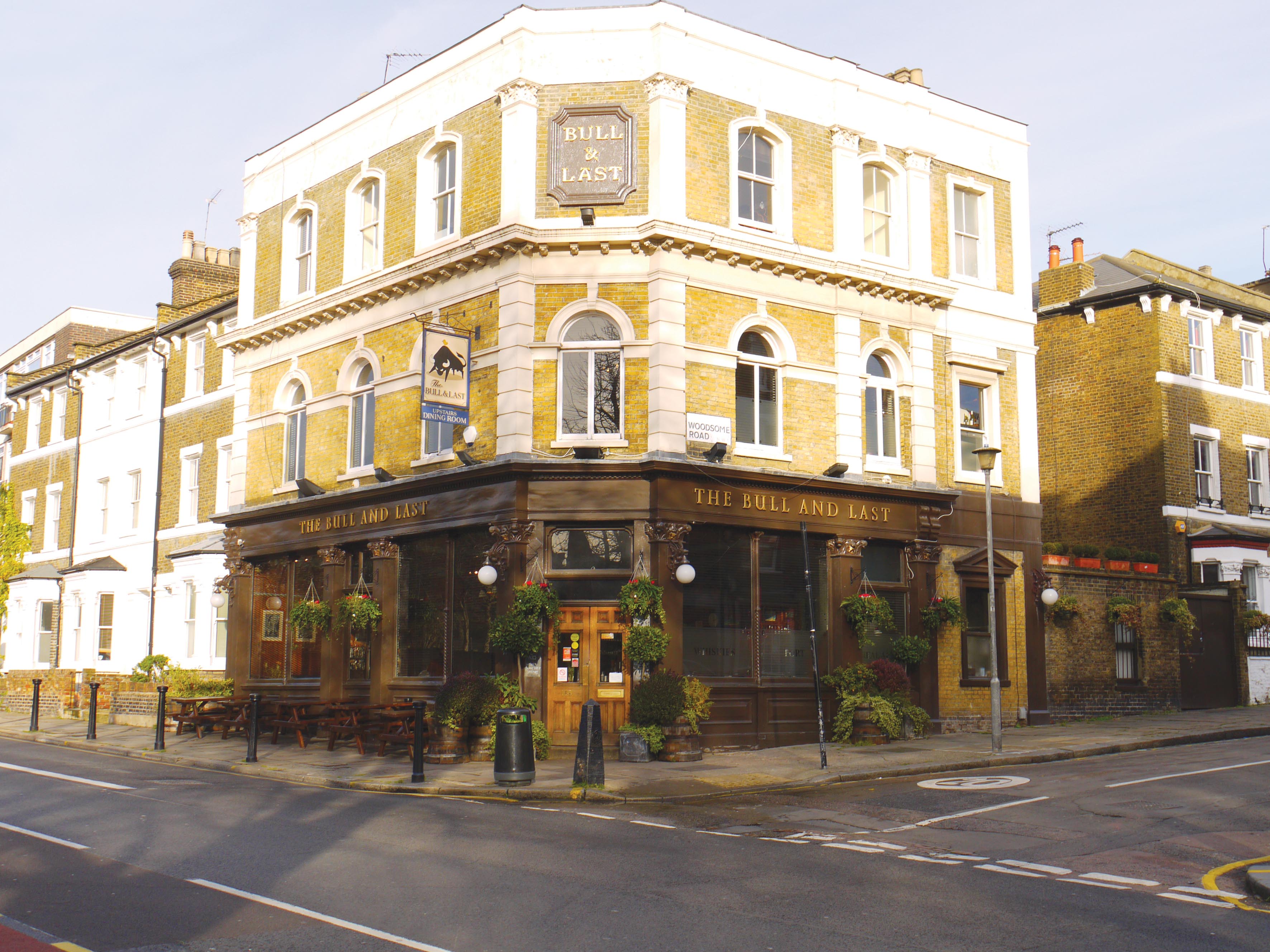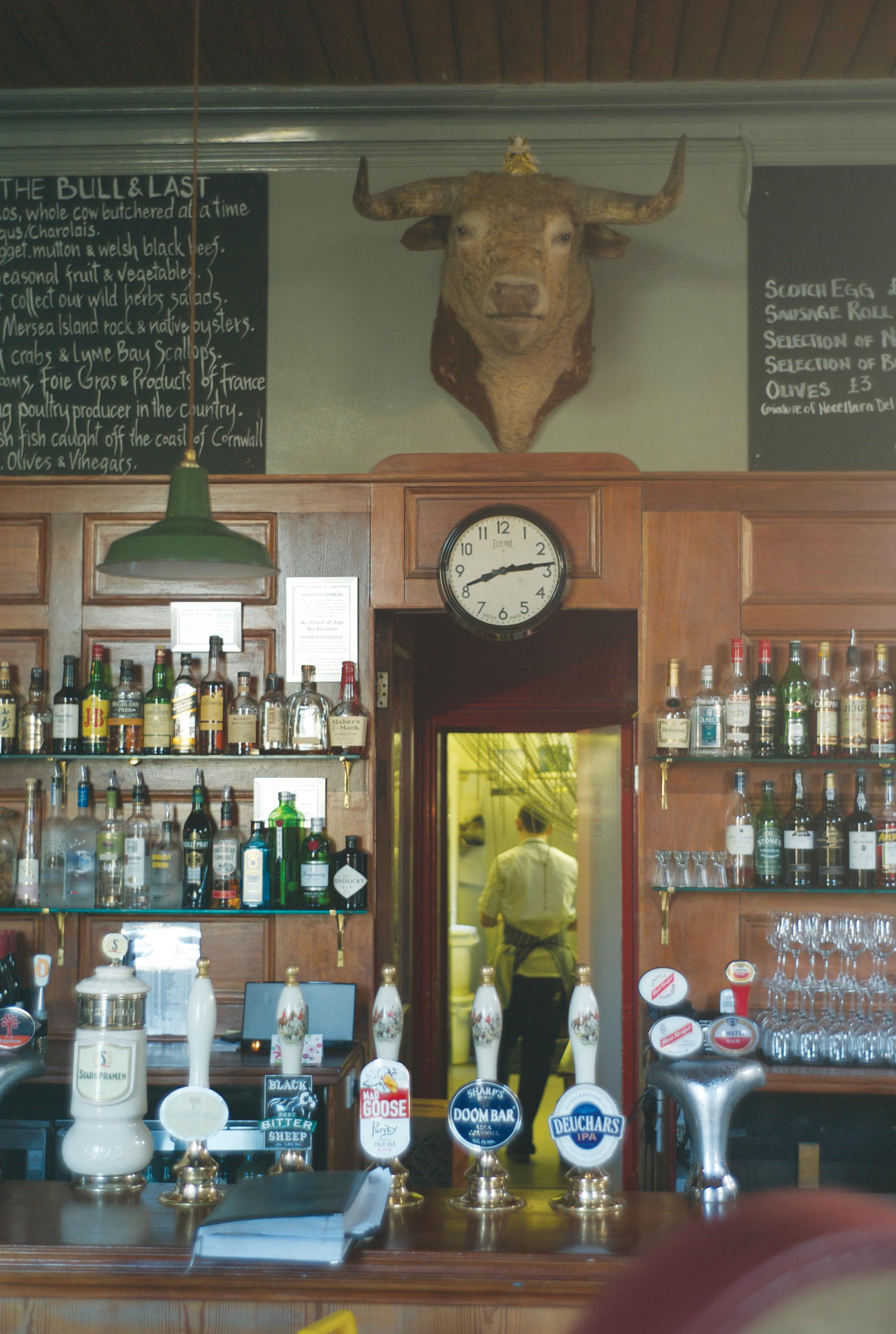Gastropubs are under fire. Or at least that’s the case for the expression used to describe pubs that serve well-executed food. But for Ollie Pudney, head chef and co-owner of the Bull & Last in Highgate, north London, the term is still as accurate as the day it was coined, despite some in the industry saying otherwise.
Pudney, who owns the Bull & Last’s freehold with business partner Joe Swiers, says this with conviction and in spite of the term being overused and muddied by big pub chains and average food-serving pubs that describe themselves as such because they serve ‘gourmet burgers’.
Gastropub is still king:
At the end of the day, though, a true gastropub is a pub and not just a restaurant where you can hear a fork drop
- Head chef and co-owner
“There are still gastropubs. Or just pubs. Pubs that are good and serve high-quality food and not the generic s**t that’s out there pretending to be better than it is,” Pudney argues in the bar at the pub he’s run with Swiers for the past eight years.
“There are so many really good ones where their offering is up there with the best restaurants, but you can go in and have a decent pint with your dog, your bird, your mate or whatever. Every area has one, but yours might not be as good as the one near a mate’s. Gastropubs are definitely still around. It’s just that there are more of them now and there are different types.
“At the end of the day, though, a true gastropub is a pub and not just a restaurant where you can hear a fork drop.”
Although the chef is defensive, he understands why the term is being dissected. Many foodie pubs are crossing the line that separates restaurants and pubs, which can confuse things, he says.
If there was a dividing line between gastropubs and restaurants, though, this pub, which is 13th on the Top 50 Gastropubs 2015 list, would be closer to the former.
Rebuilt after a fire
The Bull & Last has existed for more than 350 years, although it was rebuilt after a fire in 1840. Pudney and Swiers took over the lease eight years ago, but decided to buy the freehold after running it for just a year.
The main bar and dining area, which is one room and filled with stuffed bulls’ heads, brass and pewter tankards, seats about 40. There is also an upstairs dining room with another 40 seats, which follows the same theme, but focuses on deer stalking and instead of bulls’ heads there’s a stuffed moose head.
Like most gastropub chefs, Pudney started working with food in restaurants. He says: “I’ve been cooking since I was 14. I started in a local restaurant back home in Essex. When I grew up I came to London and went to food college. Then I worked in a one-star place in France and came back to London to work for Richard Corrigan, who judges on the Great British Menu.

“He’s got a few restaurants and I worked as a sous chef in the one Michelin-starred Lindsay House in Soho [which has now closed] for three and a half years.”
Following his stint with Corrigan, Pudney, Swiers and a third business partner leased the Prince of Wales in Putney, south-west London. The trio ran the pub for a year and a half before taking on the Bull & Last. “We ended up selling the Prince of Wales not long after taking on the Bull & Last because Putney didn’t receive our offering very well,” he says.
However, Putney’s loss is Highgate’s gain. The Bull & Last is popular and often full. It regularly does 200 covers for Sunday lunch, which became more popular after the pub came runner-up in the Observer Food Monthly’s Best Sunday Lunch awards in 2014. On busy weekday nights, the kitchen serves up to 120 covers and, on Fridays and Saturdays, it goes into the hundreds, Pudney says. “On Sunday nights it will be closer to 200 covers. It’s a massive night for us because we do a quiz downstairs in the bar and everybody who does that eats and upstairs is usually full too.”
So what keeps the customers coming back for more? The Bull & Last’s menu is simple and so is Pudney’s cooking style. He admits he’s not into overly complicated food or anything too ‘cheffy’. The menu is seasonal, but the seasons don’t dictate what goes on in the kitchen either, Pudney says.
“I suppose I don’t necessarily have a cooking style. We’re open to seasonal stuff, but we don’t follow the seasons as much as some people say they do because, at the end of the day, there are parts of the year where you haven’t got anything to use because there’s just nothing available.”
Wild ingredients feature on the menu, although not as often as they did when the chef first took over the kitchen, he explains. “I spent a bit of time loving the wild stuff and foraged for it as well as buying it in too.
‘Nothing that tastes like grass’
“But now I only use the wild stuff that tastes of something. You know, nothing that tastes like grass. You also have to be selective with wild ingredients; there are some beautiful-tasting things like hairy bittercress, but if you get a forager to pick these for you it can be £80 a kilo.”
Foraging for food also dictated what was on the menu too much and prevented the kitchen from being consistent in what it was putting out.
In his early years at the Bull & Last, Pudney would change the menu daily based solely on whatever was avail-able. But it prevented the 25 staff and eight chefs from getting to know the dishes and communicating them really well to customers.

“We would get 10 portions of something and bust it out in one day and then, boom! a new menu the next day, which was great, but you can’t really be ‘off’ if the menu is like that. These days we have a set pattern of what we’re going to do and rotate the set dishes. It’s easier to run the kitchen like that.
“All of the key players know how each dish is done and what goes into them and that’s even better for things like knowing what allergens are in dishes because legally you have to be covered for that now.”
The menu is mainly English, but there are also some French influences, he adds. Bread is made in-house because it is more cost-effective for the Bull & Last and it’s also a better quality product, Pudney says.
Game will start to appear on the menu now it’s in season, he adds. But one dish that’s popular at the moment is the brown south coast crab linguine. “Other than that, the haunch of venison is popular, but everything tends to sell the same as each other.”
As for the future of the Bull & Last, the head chef wants to continue to offer diners great food in an environment that isn’t “too frilly”. As he says this, it’s clear Pudney believes a gastropub should be more familiar with the style of the establishment where the term was coined in the 1990s — the Eagle in Clerkenwell, London (see November 12 issue).
- The Bull & Last is 13th on the Top 50 Gastropubs list 2015. Next year’s Estrella Damm Top 50 Gastropubs list will be revealed at an exclusive lunch on 25 January, For more information visit www.top50gastropubs.com.
